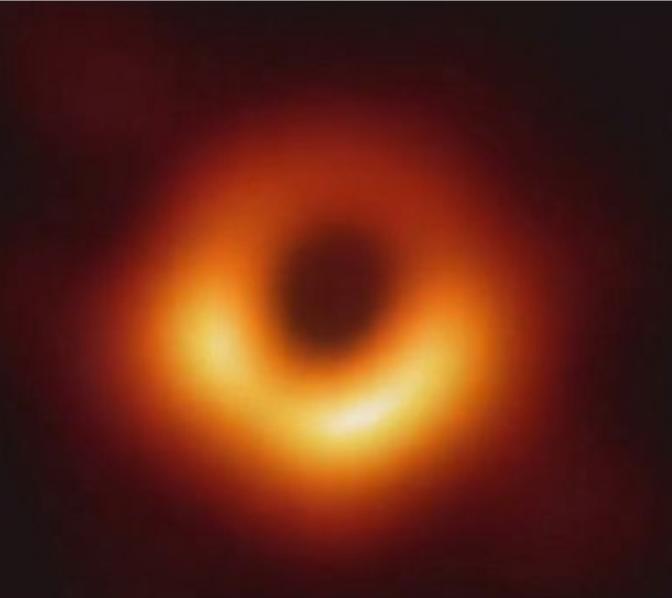As a
kid, if you never wanted to become an Astronaut, were you really a kid?Wehave
always been told that the Universe is made up of planets, moons, stars, asteroids,
comets, meteoroids, black holes and galaxies. As the technologies improved, we
saw everything from the first photos of our Earth to the first image of the
black hole which was released on 10th April, 2019. If you haven’t
seen it yet, it looks something like this.
But what if I tell you that the Universe is not made of just these things. According to ESA (European Space Agency) all these things only make 4% of all the Universe which we can observe. So what is the rest of the universe is made of which we can’t see? The answer is Dark Universe which is invisible yet dominating part of the Universe. It includes a substance called Dark Matter and a force called Dark Energy, both of them make 20% and 76% of the Universe respectively (acc. to ESA). While little is known about either, each helps us understand the Universe beyond what the eye can see
Astrophysicists suggests that Dark Matter is responsible for preventing stars within galaxies to drift away. They say that all the matter we see doesn’t create enough gravitational pull to explain Universe’s large structure. The name Dark emphasizes the fact that it doesn’t interact with any type of light. Its existence can only be observed by its gravitational pull on the visible Universe.
The concept of Dark Energy dates back to Albert Einstein’s General theory of relativity in which he considered a repulsive force that pushed space and particles apart. Researchers say that Dark Energy counteracts the force of gravity and it is the reason for the expansion of the Universe.
The
next big step in unfolding mysteries of the dark universe is ESA’s Euclid
Space Telescope which is going to be launched in 2022 and it will be in the
sky for 6 years.
Euclid will analyze the shape and redshift (shifting away) of thousands of millions of galaxies spanning back 10 billion years. This will provide a large scale 3-D map which will allow the scientists to see how dark energy contributes to the expansion of the universe.
It consists of a silicon carbide mirrorthat spans 1.2 meters in diameter,Near-Infrared Spectrometer and Photometer (NISP) andVisual Imager or Visible Instrument (VIS).
VIS will be used to measure the deformation of the galaxies by exploiting the method of Gravitational Lensing. Gravitational lensing happens when the gravitational filed of an object bends the light that passes by it. As Galaxies have lot of stars, it emits light which is deviated mostly due to dark matter, giving us distorted images.
NISP, which is going to measure redshifts (shifting away) of over a billion galaxies, will be working to determine the Baryonic Acoustic Oscillations. Described by ESA as ‘wiggle patterns’ within galaxy clusters, Baryonic Acoustic Oscillations provide a standard ruler method for measuring dark energy with the expansion rate of the universe.
As there is plenty of time left before Euclid starts sending information to us, we will be eagerly waiting for the conformation about the parts of the Dark Universe we already know and all the parts we are yet to uncover.


No comments:
Post a Comment